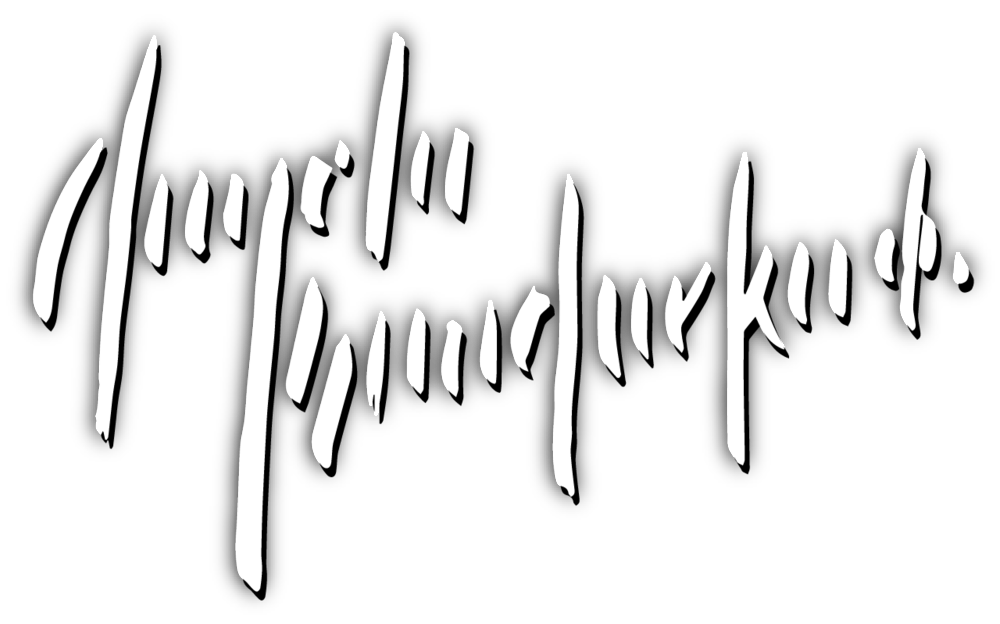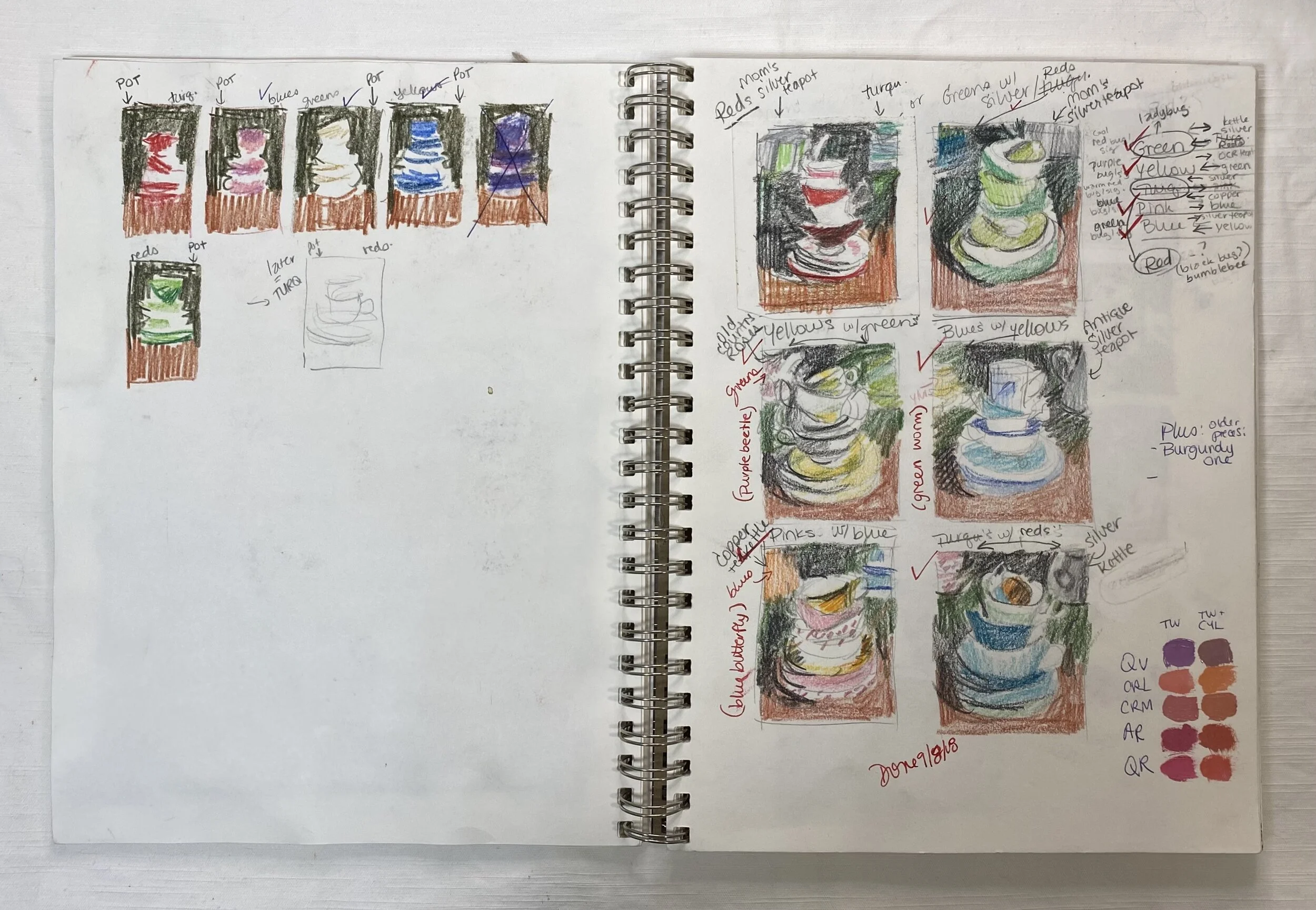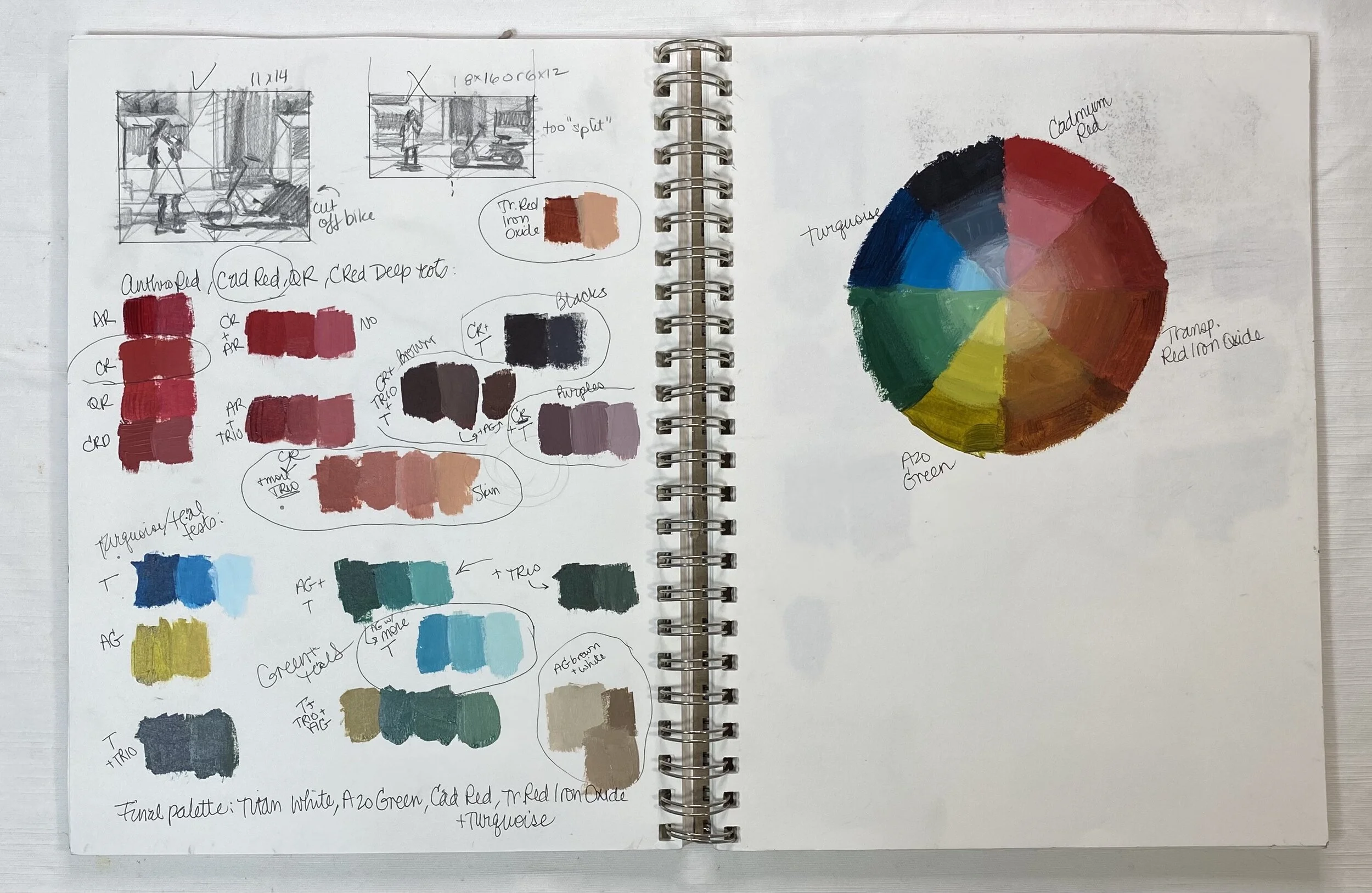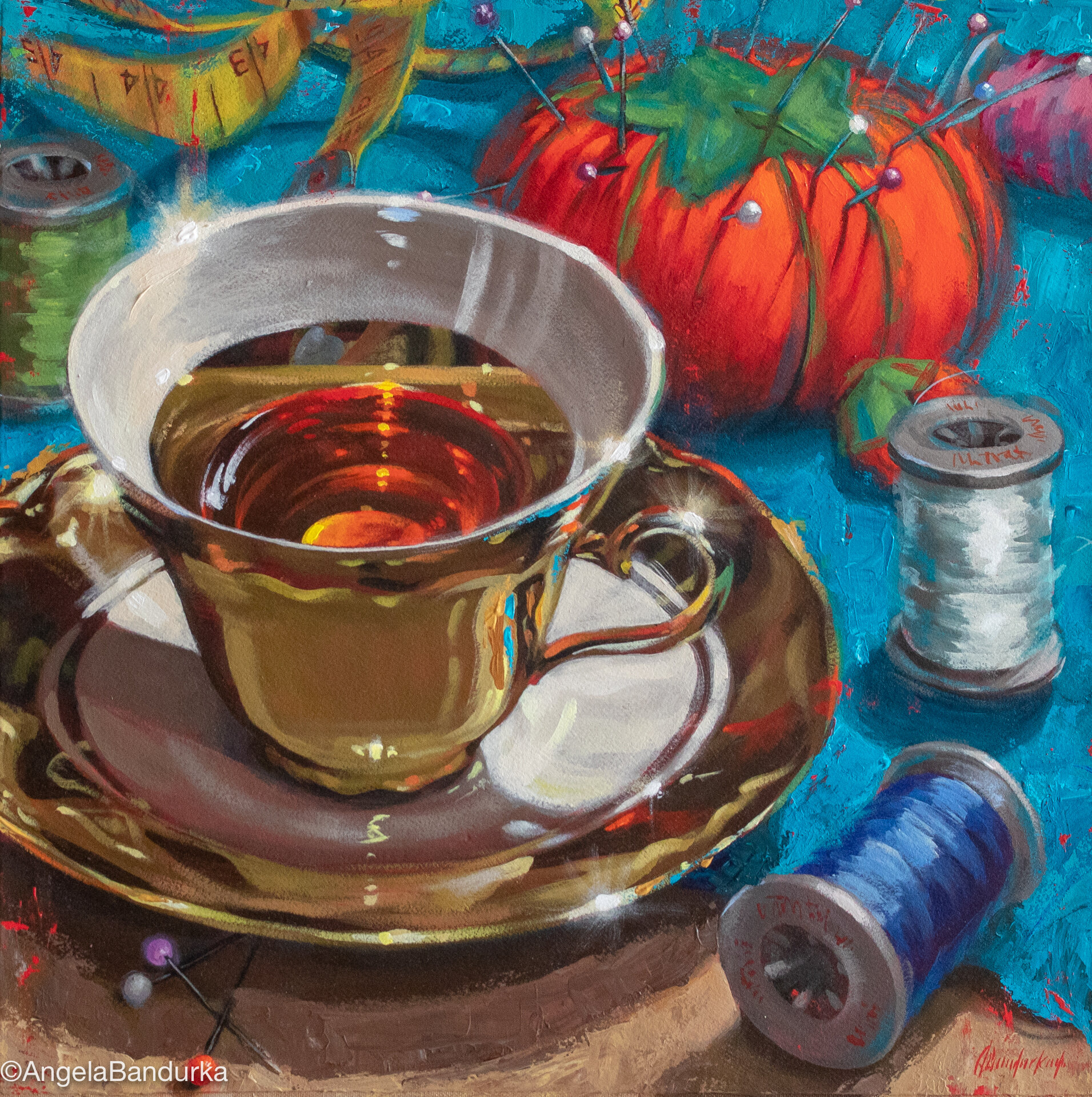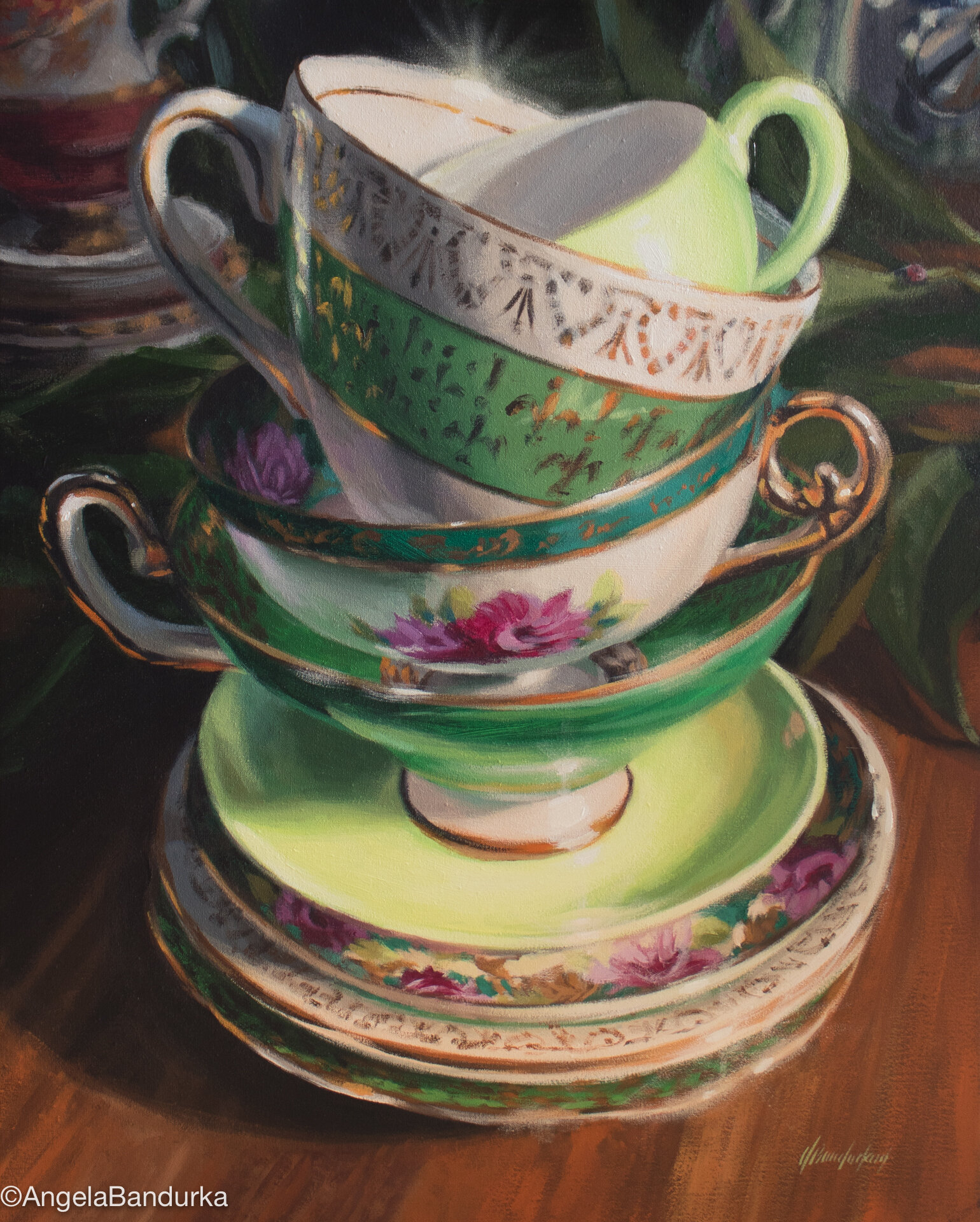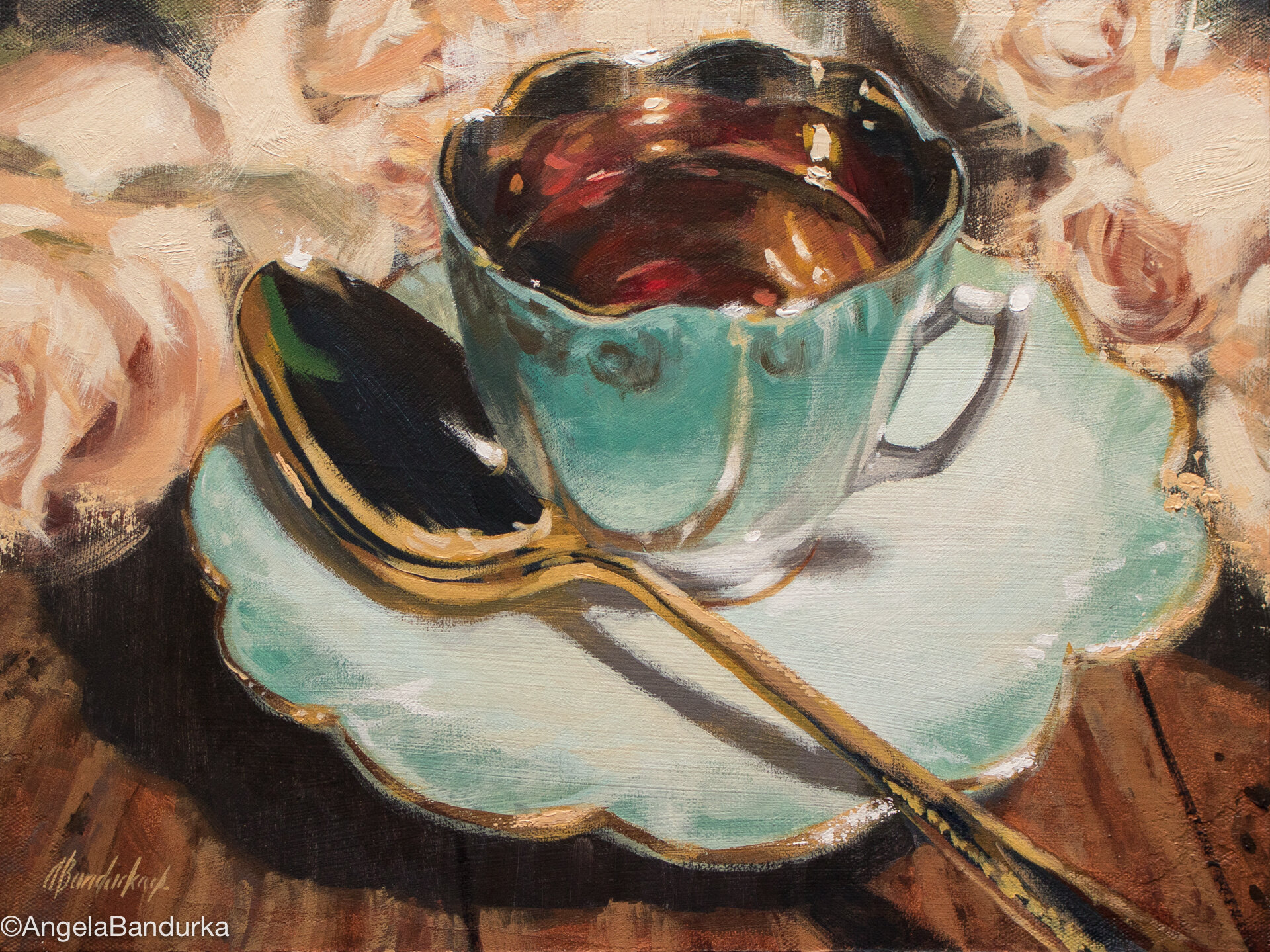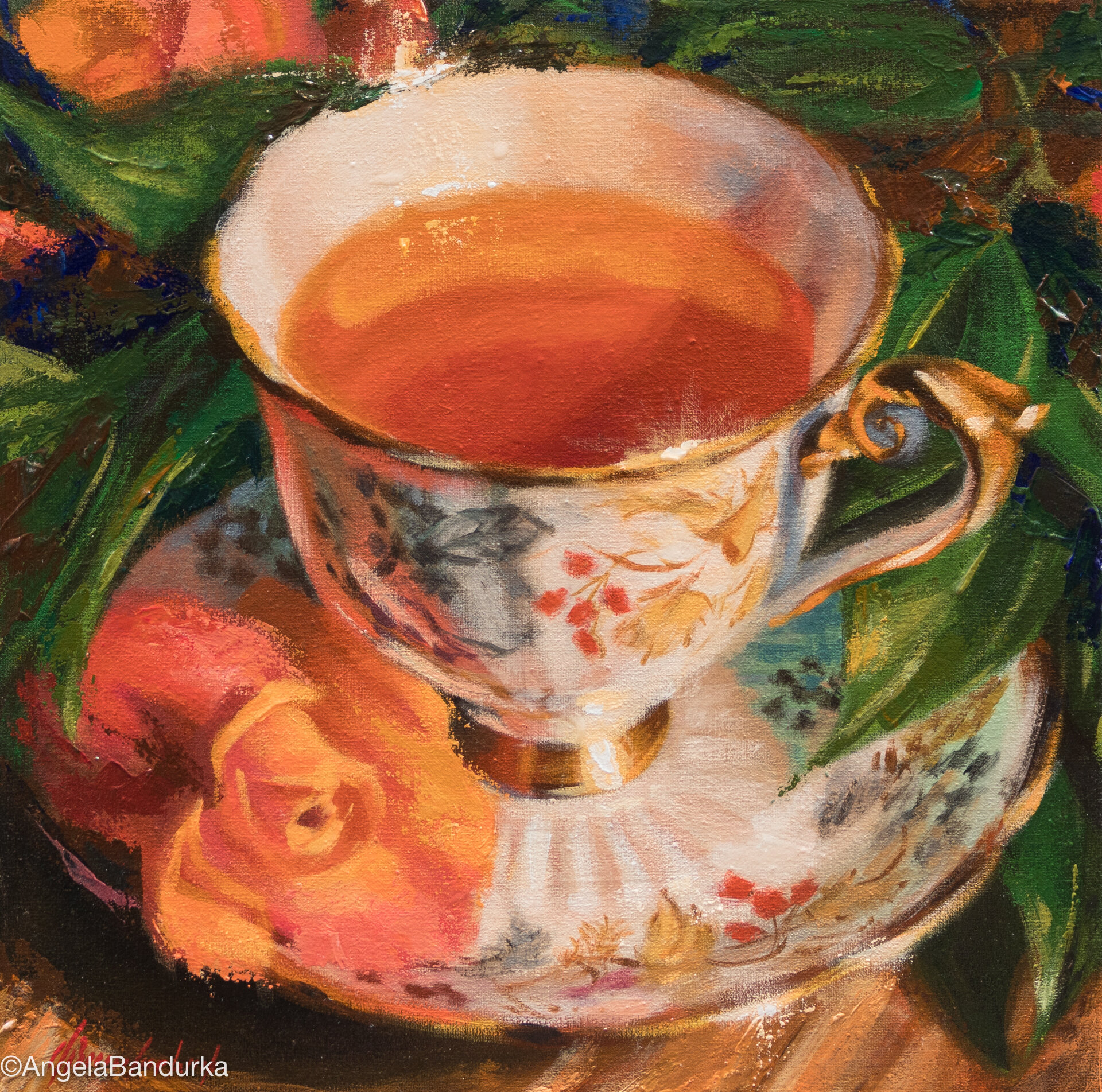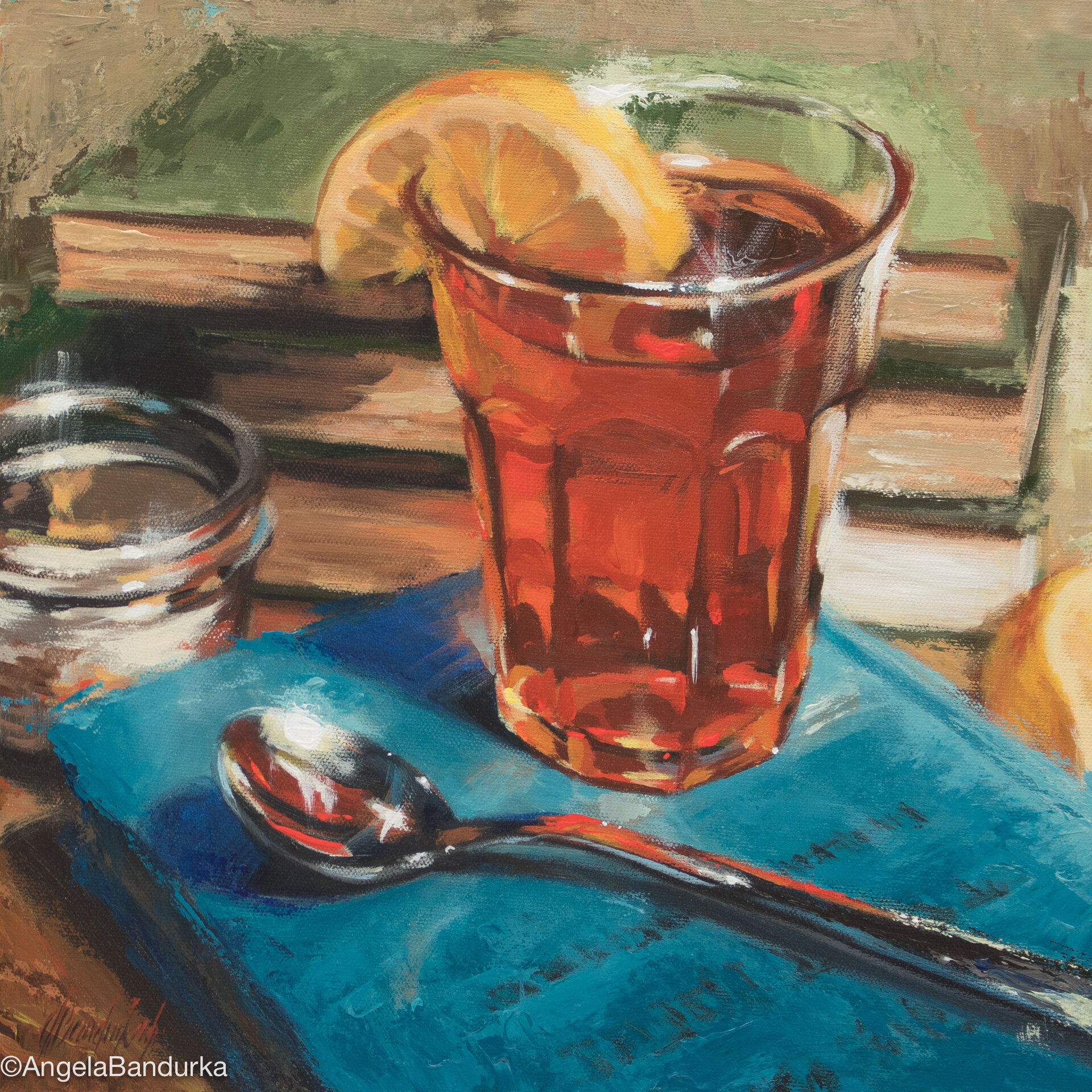Find out more about Symbology in Still Life
Check out this article from March, 2021 by Emily Snow for TheCollector.com:
10 Common Symbols in Still-Life Paintings & What They Mean From flowers to seashells, decoding the symbols in still-life paintings can reveal a hidden world of deeper meaning. https://www.thecollector.com/still-life-paintings-what-they-mean
Painting teacups has been a way for me to connect with my past - my grandparents and great grandparents, as well as after-dinner conversations over tea with my mother during holidays when we spend time with my parents just outside of Vancouver, B.C.
Setting up your still-life painting can be a tricky part of creating an effective painting. Figuring out your lighting, what elements you want to add to the scene to give it a narrative, and how to frame the piece are all part of the challenges we face when starting.
What’s the story you’d like to share with your viewer?
For me, the first idea may come from a theme (like, writing a book while sipping tea; or stacking the teacups to store away after use) or it could come from a technical challenge - a particular cup with a pattern or colour that I love and want to try to capture.
Many folks like to use symbology or mythology in their still-life paintings, just as the masters did centuries ago (and still do). See the sidebar to the right for a link to a fascinating article about symbology in still life paintings.
the Three key Elements of a Still Life
ONE: SUBJECT MATTER
One of the first steps after the concept is the selection of elements that come together to tell the story. Gather all of the elements you can to help you craft the message, they could be memorabilia or symbolic items. Then you’ll want to play around with putting them together - how do they fit together? Do the colours feel harmonious (and even if they don’t, you can always change the colour while painting).
For me, I like to think of a series of works at one time and how they’ll fit together. Here is an example from my sketchbook of some of the planning that I may do before painting. All little elements will be added after I actually start setting them up, but this process gives me a view of how the collection of paintings will be shown together.
Have you struggled with creating an effective layout?
Working in a sketchbook to work out the “kinks” before you apply paint to canvas is a great way to help focus and produce better paintings, in my opinion. It may or may not be for you, but give it a try and see what you think.
TWO: LAYOUT
Design is another big element of still life painting. Learning to create an effective design can make all the difference in your work. Learning to create a good flow of the eye, and balance in a painting is critical. The concept of PHI is just one way to think about good design (you may have also heard it referenced as the Fibonacci sequence or the Golden Ratio). Figuring out what your viewpoint will be for your work is also important here, will you get up high and look down on the subject (bird’s eye view), or down lower, looking at the still life from a comfortable seated position, or even lower, almost parallel with your subject - all are important in helping to craft the design of the painting. The best way to decide which way is better for you is to try many different ways of looking at your subject and then picking the design that you think would tell your story most effectively.
THREE: LIGHTING
Lighting your subject can also be a part of the design, whether you light from above, in front, from one side, or the other - it can change how the shadows and highlights fall on your scene. The shadow and light in a painting are what create a sense of depth! I use a very bright, adjustable studio spotlight that can be moved easily to help light my setup. Check out this incredible, thorough video that walks you through some considerations when lighting your still life scenes. When working from life, it stays in place on the subject matter until I’m finished my painting but I always take a good photo with my digital SLR camera to make sure I capture the scene just in case I have to put everything away in a hurry or want to reference it once the painting is complete.
Want to take your still life skills to the next level?
If you’re interested in learning how to take your still life paintings to the next level but aren’t sure if a full workshop is where you’d like to invest your time and money, consider joining me for a live painting demo. There are a few in-person opportunities coming up to say hi if I’m in your area (note, with COVID I’m still sticking close to my home in the Pacific Northwest, but am hoping to add more locations in 2022), but there are also some great online demos coming up as well. I’m really excited about my upcoming live, online painting demonstration - Teacups and Florals, on July 30th. There will be more to come at GoTerracotta.org, so if you’re reading this after 7/30/2021, check them out to see what’s new.
Upcoming Events Schedule: check out demos, studio tours, and speaking events that are coming soon.
In-Person Workshops (this schedule is much lighter right now, but as COVID becomes more manageable I’ll be opening up more in-person classes and workshops).
